
by Melanie Taylor | Dec 7, 2018
As the holiday season quickly approaches, many people are filled with extra holiday cheer and enthusiasm. Some are jolly, but still overwhelmed with all of the activities, decorating, and shopping that needs to be completed. Then, there are those that find the holiday season as a reminder of things such as, the death of a loved one, family feuds, divorce, and the list goes on. If you are feeling this way here are a few tips to make getting through the season a little bit easier.
1. Feel your emotions – Many people want to suppress their sadness or anxiety, but this only makes it worse. We are all allowed to grieve, cry and feel mad at times. If you feel this way, let yourself feel your feelings. You will feel better once you have accepted and worked through the emotions. You also do not have to force yourself to feel happy just because it is the holiday season.
2. Reach out to others – Instead of secluding yourself spend time with others, whether it is at church, a community group or with family and friends. Spending time with others and socializing is good for the spirit. In addition, there are tons of volunteer opportunities during the holidays. Try something new and volunteer your time to a worthy cause. You will feel great about helping others and contributing to the cause. Research such as this one conducted by UnitedHealth Group commissioned a national survey of 3,351 adults and found that the majority of participants reported feeling mentally and physically healthier after a volunteer experience. The research showed:
- 96% reported that volunteering enriched their sense of purpose in life
- 94% of people who volunteered in the last twelve months said that volunteering improved their mood
- 80% of them feel like they have control over their health
- 78% of them said that volunteering lowered their stress levels
- 76% of people who volunteered in the last twelve months said that volunteering has made them feel healthier
- About a quarter of them reported that their volunteer work has helped them manage a chronic illness by keeping them active and taking their minds off of their own problems
- Volunteering also improved their mood and self-esteem
3. Be realistic – Realize that times and traditions change as families grow and age. Do not focus on everything having to be the same every year. Be willing to accept changes, such as adult children may not be able to attend the family gathering, so utilize technology and talk through video conferencing, share pictures on email and/or Facebook. Find a way to make it work.
4. Set aside differences for everyone’s sake. Aim to accept family and friends the way they are, even if they do not meet your expectations. Leave grievances at the door for the day and enjoy your family and friends. Share those grievances and talk at a more appropriate and private time. Also, remember they could be feeling the stress of the holiday too. So, be patient if someone is grouchy or sad as you celebrate. You may both be feeling the same way.
5. Learn to say no – Be realistic in the number of activities you and your family can participate. Do not feel guilty because you cannot attend every party and event you are invited too. Graciously decline an invite and share that your schedule is booked, but thank them for thinking of you. A host does not expect that everyone will attend their parties.
6. Take a breather as needed – If you start to feel overwhelmed with anxiety, anger or sadness take a few minutes to be alone. Take 15 minutes to spend in the quiet to reduce the stress and clear your mind. For example: listen to soothing music, do a few mindful breathing exercises to slow yourself down or read a book to temporarily escape the stress.
7.Seek professional help as needed – there are times when the emotions are just too overwhelming to sort through on our own. If you continue to feel sad, anxious, angry, etc. there is absolutely no shame in seeking the help of a doctor or mental health professional. It will only help you work through your feelings with a non-bias person. Helping yourself feel better will improve your quality of life and those around you.
Do not let the idea of the holidays turn you into a modern day Ebenezer Scrooge. Learn to take care of yourself first. Learn your limitations and accept them. Do not let others’ expectations overwhelm you. Just remember when you start feeling extreme levels of emotions and/or stress take a few deep breathes and remind yourself to relax and feel the moment. Be mindful of your surroundings and remind yourself of your many blessings, even when going through difficult times. Make it your personal goal to feel your feelings and enjoy what you can about the holiday season, whether it is the twinkling lights, time with friends and family, the food or any of the many special holiday traditions.

Aim to find JOY during this holiday season.
Sources:
Stress, depression and the holidays: Tips for coping. www.mayoclinic.org,
Signs and Symptoms of Depression http://edis.ifas.ufl.edu/pdffiles/FY/FY10000.pdf
Depression and Older Adults http://edis.ifas.ufl.edu/pdffiles/FY/FY95200.pdf
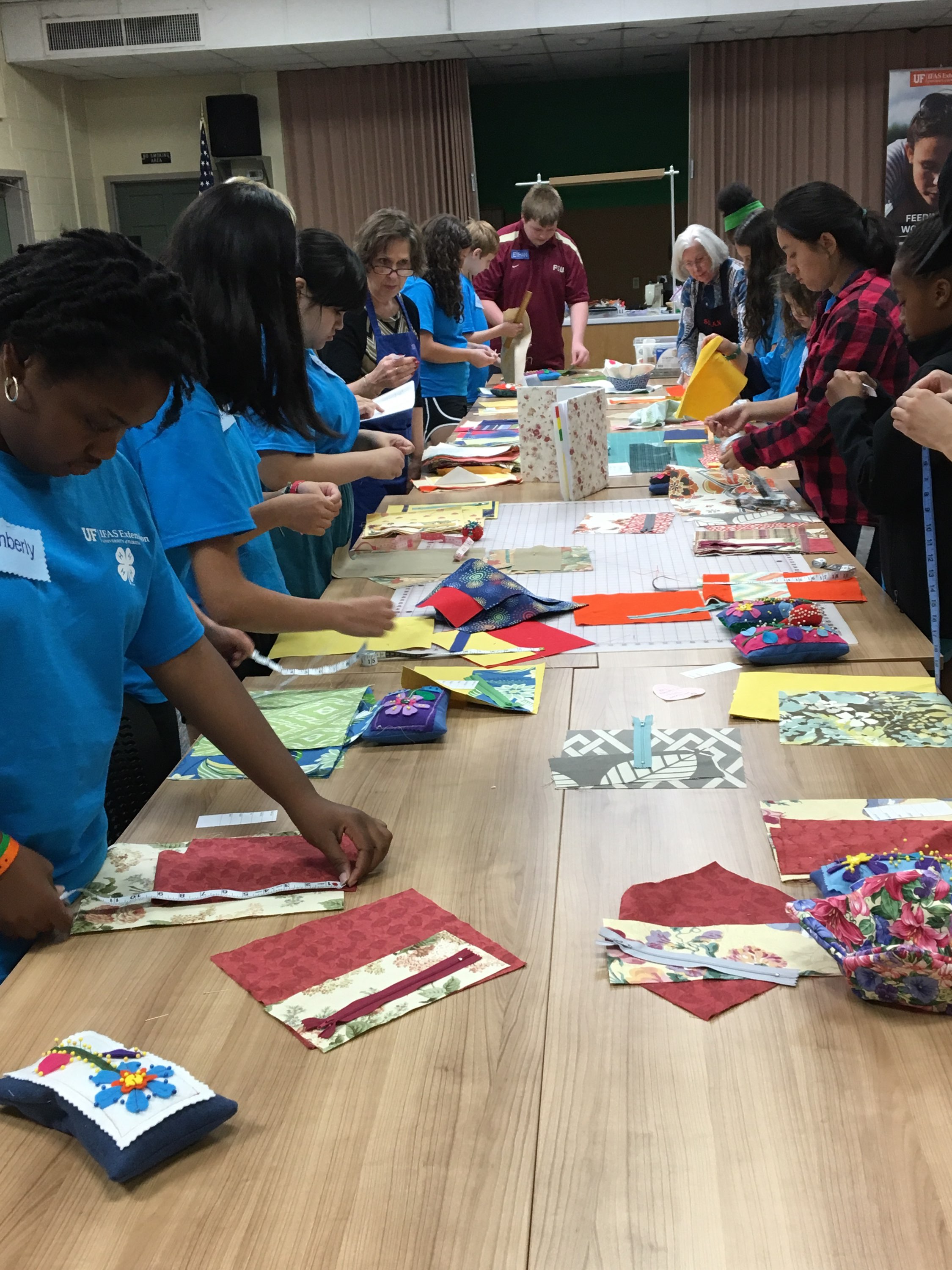
by Heidi Copeland | Jul 26, 2018
Have you ever read the book Something from Nothing, by Phoebe Gilman? It is a wonderful story, with a sewing theme, of sewing/creating something beautiful over and over again. My fervent hope is that the 4-H sewing camp participants feel the same way about all of their creations generated during sewing camp!
Recently, the Tallahassee Chapter of the American Sewing Guild (ASG, part of a national, non-profit organization dedicated to the art and love of sewing) generously volunteered their time, talent, and supplies to enrich the experience of every 4-H sewing camp participant.
The ASG philosophy, coupled with the 4-H history of helping youth “learn by doing” is a good fit. Both organizations focus on teaching new topics and life skills development through experiences thus enhancing self-confidence through skill building.
In today’s world, sewing is seemingly no longer a necessity. Sewing can even be expensive! But, can we put a price on self-confidence or creativity, sustainability or even a life skill?
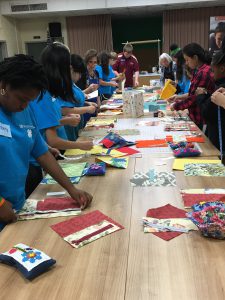
4-H Sewing Campers Photo source: Heidi Copeland
Think of all the things learned while sewing. Sewing helps teach:
- Finger dexterity and the development of fine motor skills.
- The value of patience.
- Systematic following of directions – both verbal and written.
- Creativity!
- Vocabulary as well as techniques.
- Pride in accomplishment for a job well done!
Moreover, sewing truly integrates science, technology, engineering, art and math (STEAM). And it is FUN! Campers:
- Learned first-hand about fibers (science).
- Experienced technology using various sewing machines and equipment – some even computer driven.
- Became adept at trouble shooting their own machine repair (engineering).
- Artistically bedazzled their creations.
- Utilized practical applications of many mathematical concepts to measure and sew as well as critical thinking and problem solving.
The 4-H Club pledge says, “I pledge … My Head to clearer thinking, My Heart to greater loyalty, My Hands to larger service and My Health to better living for my club, my community, my country, and my world”. ALL of the campers contributed to a community service project sewing a pillowcase destined for the Early Learning Coalition of the Big Bend Read a Child to Sleep campaign. This fostered the idea that empathy, sharing, nurturing relationships and giving is important too.
Sewing certainly did not stop when camp ended. A budding entrepreneur posted on Facebook she is taking orders for her creations while another camper is helping a local theatre group fashion costumes to obtain her community service hours fulfilling a high school graduation requirement.
There is no better feeling than the pride of accomplishment. Sewing campers learned by doing and while they were at it learned a skills they will carry throughout life.
To find out more about the American Sewing Guild: https://www.asg.org/
To find out more about Leon County 4-H programs: http://leon.ifas.ufl.edu/4h
If you are interested in learning more about 4-H, go to florida4h.org.
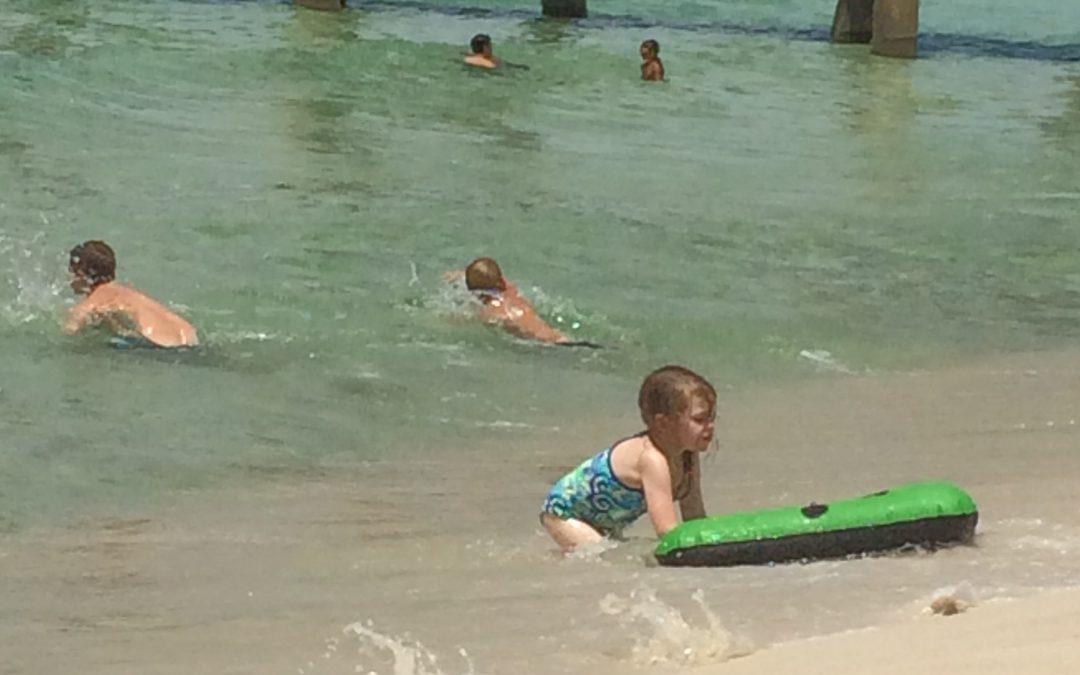
by Melanie Taylor | Jun 23, 2018
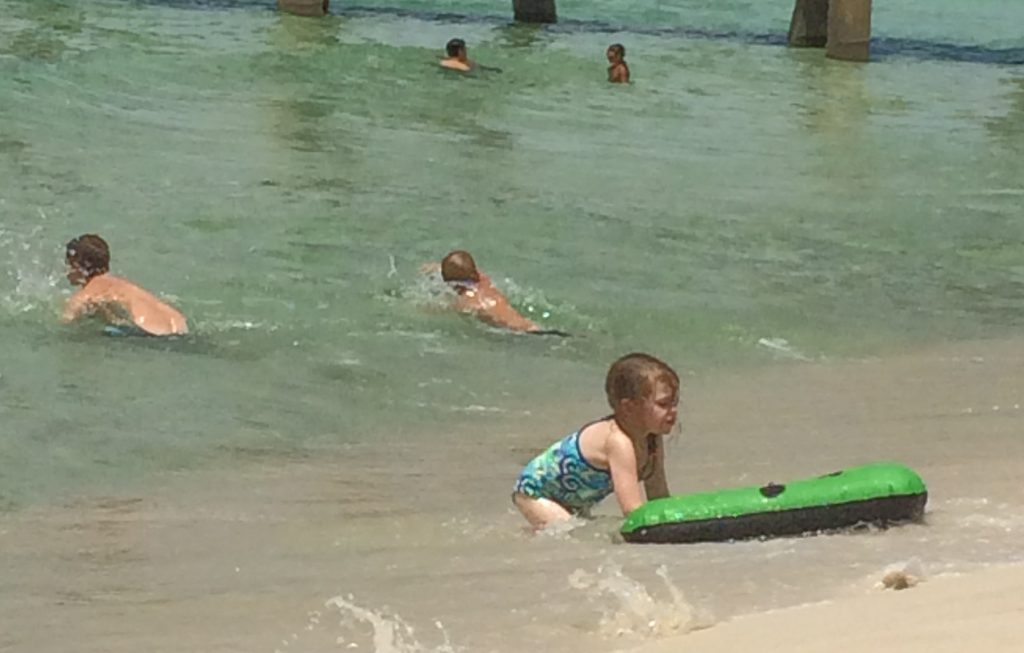
Always supervise children closely around water.
Photo credit: Marie Arick
Summer is here! As the long, hot days of summer move forward there are many things to consider when it comes to children and water safety. Each summer we hear of tragic incidents of children drowning in pools, spas, and other bodies of water. These tragedies may be avoided by following a few simple tips to keep your child safe while letting them enjoy their summer break.
The U.S. Consumer Product Safety Commission (CPSC) is the agency charged with protecting the public from unreasonable risks of injury or death from thousands of types of consumer products under the agency’s jurisdiction. In addition to Pool and Spa Safety, the CPSC is committed to protecting consumers and families from products that pose a fire, electrical, chemical, or mechanical hazard. CPSC launched the campaign, PoolSafely.gov, which provides Pool Safely: Simple Steps to Save Lives, a national public education campaign to reduce childhood drownings, submersion injuries and entrapments. Review these tips below.
Tips from PoolSafely.gov and CPSC:
- Never leave a child unattended in or near water.
It is recommended to designate an official “Water Watcher”, this is an adult assigned with supervising the children in the water. This should be their only task – they should not be reading, texting or playing games on their phone. Have a phone close by at all times, in case you need to call for help, and if a child is missing, check the pool first. Even when a lifeguard is present, parents and caregivers should still take the responsibility of being a designated “Water Watcher”. When the lifeguard chair is empty, the other lifeguards may not be able to see the entire pool and when lifeguards are sitting in low chairs; other people in the pool can block their view.
- Teach children how to swim.
Swimming is fun, great exercise and it is a lifesaving skill, so why would you not instill this skill in your child? Be sure to enroll children in swimming lessons – the earlier the better. A few swimming lessons may just save their life.
- Teach children to stay away from pool drains.
Show your children where the pool drain is located and remind them of the dangers of those drains. Remind them not to play or swim near drains or suction outlets, especially in spas and shallow pools, and never enter a pool or spa that has a loose, broken or missing drain cover. Sadly, children’s hair, limbs, jewelry or bathing suits, etc. can get stuck in a drain or suction opening. When enjoying time in a spa, be sure to locate the emergency vacuum shutoff before getting in the water.
- Ensure all pools and spas – both in your backyard and any public pool you may visit – have compliant drain covers.
The powerful suction from a pool or spa drain can even trap an adult, let alone a child. The Pool and Spa Safety Act is named after Virginia Graeme Baker, a child that tragically died from drowning due to a suction entrapment from a faulty drain cover. Do to this act, it is now required by law that all public pools and spas must have drain grates or covers that meet safety standards to avoid incidents like the one that took Graeme’s life.
- Install proper barriers, covers and alarms on and around your pool and spa.
One of the biggest dangers with pools or spas is when they are left open without any proper fences, barriers, alarms and covers. Each of these can be lifesaving devices. A fence of at least four feet in height should surround the pool or spa on all sides and should not be made of a climbable material. The pool should only be accessible through a self-closing, self-latching gate. Teach children to never climb over a pool gate or fence. Always remove portable pool ladders when not in use, just so your child is not enticed to enter the water. It is also highly recommended to install a door alarm from the house to the pool area, and keep pool and spa covers in working order.
- Know how to perform CPR on children and adults.
CPR can be the reason a drowning victim survives. With all of the possible locations of CPR trainings, why not get CPR certified as an extra precaution in case there is a water emergency? CPR classes are available through many hospitals, community centers, or by contacting your local American Red Cross. Once certified, be sure to keep the certification up to date.
- Finally, take the Pledge!
Before heading to the water with your family, remember to take the Pool Safely Pledge. This online call to action is a reminder to stay safer around the water. This pledge for you and your child can be found at https://www.poolsafely.gov/pledge/. The pledge is supported by CPSC and the PoolSafely.gov initiative and Olympic swimmer Michael Phelp along with over 60,000 other pledge takers. Parents, you can also download coloring sheets and other fun PoolSafely.gov child friendly apps and songs.
With the large variety of water related summer activities available it does leave a chance for risky incidents. Some work and preparation ahead of time will make for a less anxious and more fun-filled summer. Planning for risk will lessen the high-risk stakes and make sure everyone is prepared in case of an emergency. So remember, Simple Steps Save Lives. Enjoy a safe, fun, and water filled time this summer!
Resources: For more information be sure to visit Pool Safely: Simple Steps Save Lives – https://www.poolsafely.gov
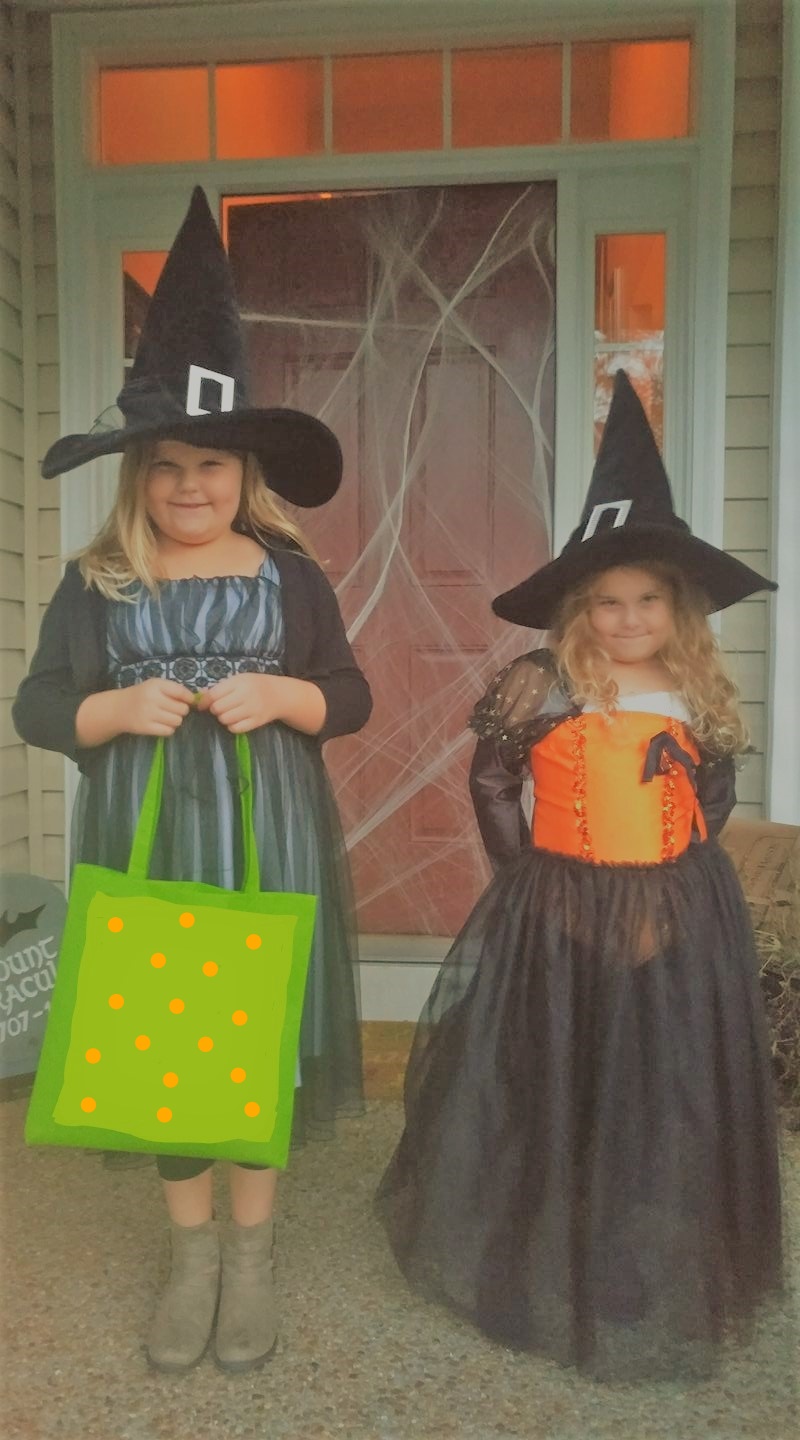
by Melanie Taylor | Oct 16, 2017

Make Halloween a fun and safe night for children and adults alike.
From candy to pumpkins to the costumes, Halloween is a fun-filled time for kids and adults alike. However, it can pose dangers. To help make this year’s trick-or-treat a safe and fun time, follow these simple safety tips compiled by the American Academy of Pediatrics.
CREATIVE COSTUMES:
Plan costumes that are bright and reflective. Make sure shoes fit well and costumes are short enough to prevent tripping, entanglement, or contact with flames.
Consider adding reflective tape or striping to costumes and trick-or-treat bags for greater visibility.
Because masks can limit or block eyesight, consider non-toxic makeup and decorative hats as safer alternatives. Hats should fit properly to prevent them from sliding over eyes. The makeup should be tested on a small patch of skin ahead of time to ensure there are no unpleasant allergies on the big night.
When shopping for costumes, wigs, and accessories, look for and purchase those with a label clearly indicating they are “flame resistant.”
If a sword, cane, or stick is a part of your child’s costume, make sure it is not sharp or long. A child may be easily hurt by the accessories if he/she stumbles or trips.
Do not use decorative contact lenses without an eye examination and a prescription from an eye care professional. While the packaging on decorative lenses will often make claims such as “one size fits all,” or “no need to see an eye specialist,” obtaining decorative contact lenses without a prescription is both dangerous and illegal. This can cause pain, inflammation, and serious eye disorders and infections, which may lead to permanent vision loss.
Review with children how to call 911 if they ever have an emergency or become lost.
PUMPKIN CARVING TIME:
Small children should never carve pumpkins. Children can draw a face with markers. Then adults can do the cutting.
Consider using a flashlight or glow stick instead of a candle to light your pumpkin. If you do use a candle, a votive candle is safest.
Candlelit pumpkins should be placed on a sturdy table, away from curtains and other flammable objects, and not on a porch or any path where visitors may pass close by. They should never be left unattended.
HOME SAFETY:
To keep homes safe for visiting trick-or-treaters, parents should remove from the porch and front yard anything a child could trip over such as garden hoses, toys, bikes, and lawn decorations.
Adults should check outdoor lights and replace burned-out bulbs.
Wet leaves and debris should be swept from sidewalks and steps.
Restrain pets so they do not jump on or bite a trick-or-treater.
TRICK-OR-TREAT TIME:
A responsible adult should always accompany young children during their neighborhood trick-or-treating.
Obtain flashlights with fresh batteries for all children and adults.
If your older children are going alone, plan and review the route that is acceptable to you. Agree on a specific time when they should return home.
Only go to homes with a porch light on and never enter a home or car for a treat.
Because pedestrian injuries are the most common injuries to children on Halloween, remind Trick-or-Treaters to:
- Stay in a group and communicate where they will be going.
- Remember reflective tape for costumes and trick-or-treat bags.
- Carry a cellphone for quick communication.
- Remain on well-lit streets and always use the sidewalk.
- If no sidewalk is available, walk at the far edge of the roadway facing traffic.
- Never cut across yards or use alleys.
- Only cross the street as a group in established crosswalks (as recognized by local custom). Never cross between parked cars or out of driveways.
- Do not assume the right of way. Motorists may have a hard time seeing Trick-or-Treaters.
- Just because one car stops does not mean others will!
- Law enforcement authorities should be notified immediately of any suspicious or unlawful activity.
HEALTHY HALLOWEEN TIPS:
A good, healthy dinner prior to parties and trick-or-treating will discourage children from filling up on Halloween treats.
Consider purchasing non-food treats for those who visit your home, such as coloring books, stickers, or pens and pencils.
Wait until children are home to sort and check treats. Though tampering is rare, a responsible adult should closely examine all treats and throw away any spoiled, unwrapped or suspicious items.
Try to ration treats for the days and weeks following Halloween to prevent overindulging, which will lead to a stomachache and ruin the night’s fun.
Make sure the Halloween night is fun and safe with the suggested tips above. These tips will help guarantee you all a ghoulishly good time.
Source: American Academy of Pediatrics
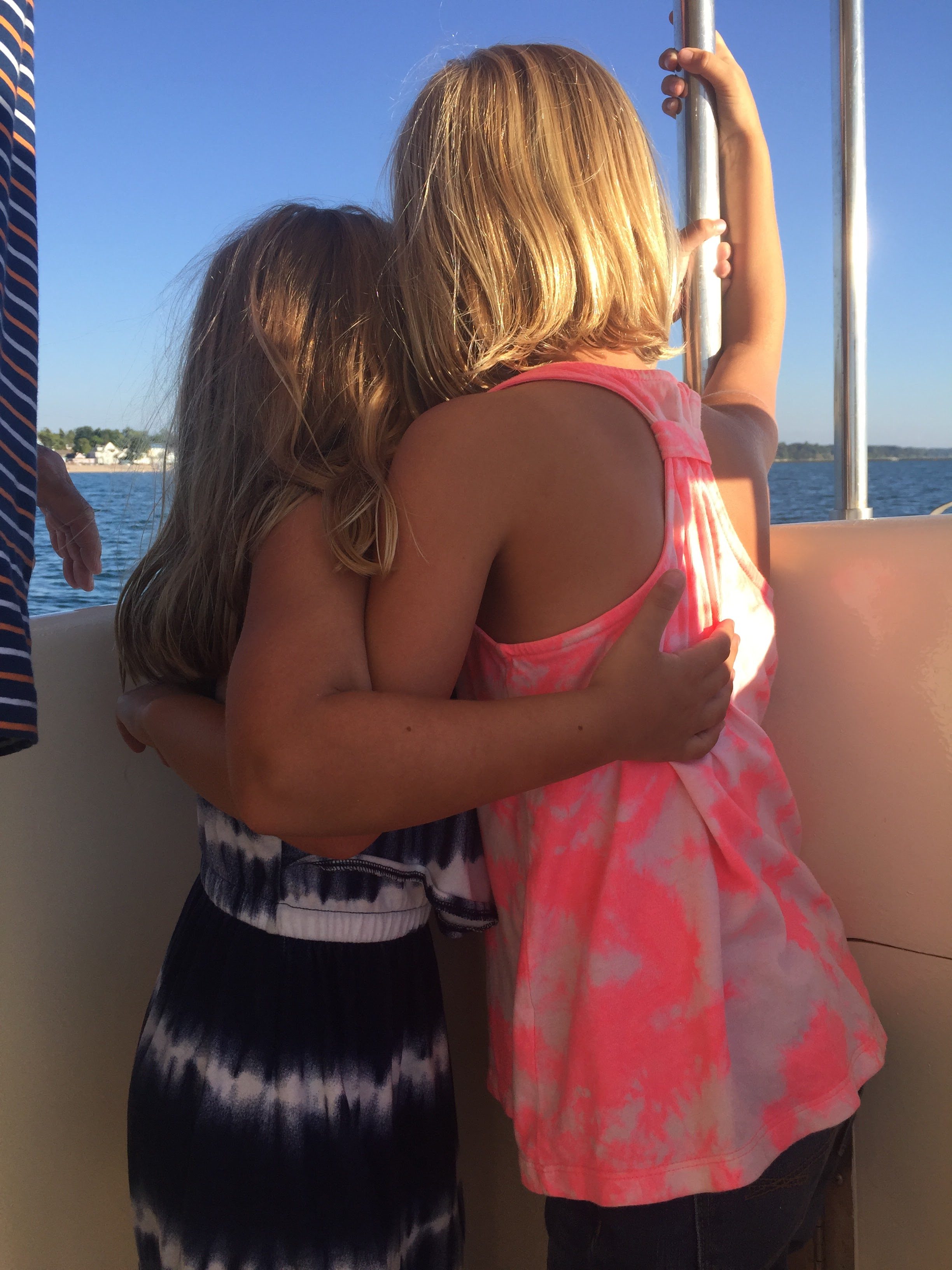
by Kendra Hughson | May 5, 2017

Family rituals and traditions, like family vacations, make lasting memories.
This will be my sixth Mother’s Day, so I am not an experienced mother by any stretch of the imagination. As a Family and Consumer Sciences Extension Agent, I am fortunate to have plenty of coursework and some practical experience in working with children– but real life is different. Here are a few of the things I have learned – from coursework and just a little bit of experience:
Every stage of childhood brings a new joy and a new challenge. Understanding child development can help parents know what to expect and how to handle challenges. Extension is a great resource for child development. We have fact sheets on all ages and stages of development. You can find them in our Electronic Data Information Source (EDIS) publications. Search them here: http://edis.ifas.ufl.edu/topic_child_development
Finding effective discipline techniques and sticking to them also is a challenge. Children need consistency. I have found that focusing on good behavior and having clear, consistent rules makes life much more peaceful. Now that my child is in school, we use a simple chart with just two or three items and use colored dots, similar to what my daughter is used to in school. This keeps it consistent and focused on the positive behaviors I want to see. My daughter is excited to earn privileges and the reward of good behavior dots or stickers. Our UF/IFAS Extension site has some great ideas for discipline too. Find them here: discipline resources.
Children need routines. I think adults do, too. Having a routine and sticking to it helps children know what to expect. Those family rituals and traditions are just as important for building family stability and a sense of belonging. They make for great family memories! Don’t forget to make time for bedtime stories, making cookies, or for family celebrations, like Mother’s Day.
I am not an expert at parenting. I have made mistakes, some big, some little. When I do need expert advice, I go back to what I have learned from my work in Extension. Extension has all the research-based information you can trust on parenting and a variety of other topics. Check it out: edis.ifas.ufl.edu.










